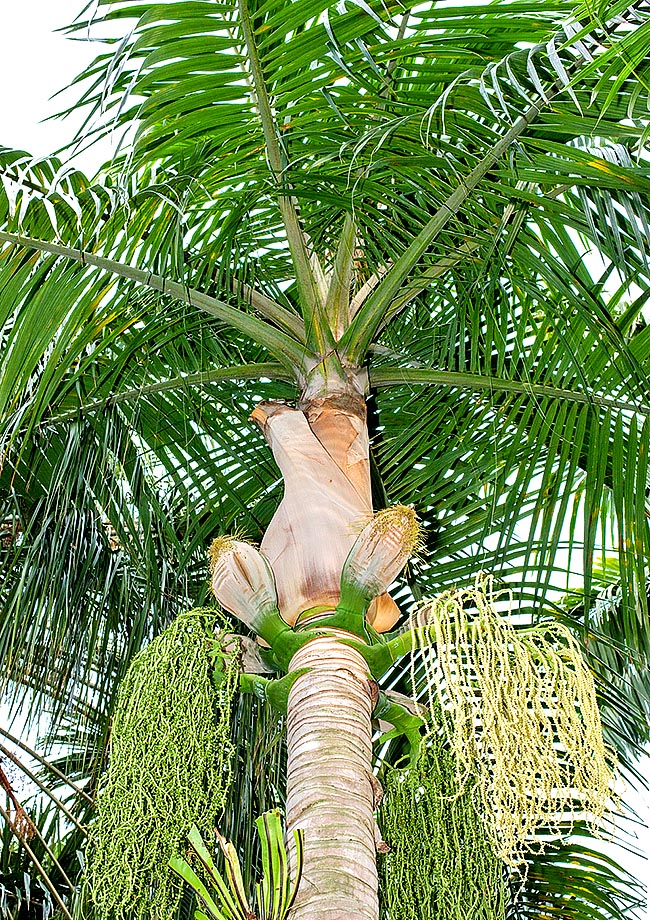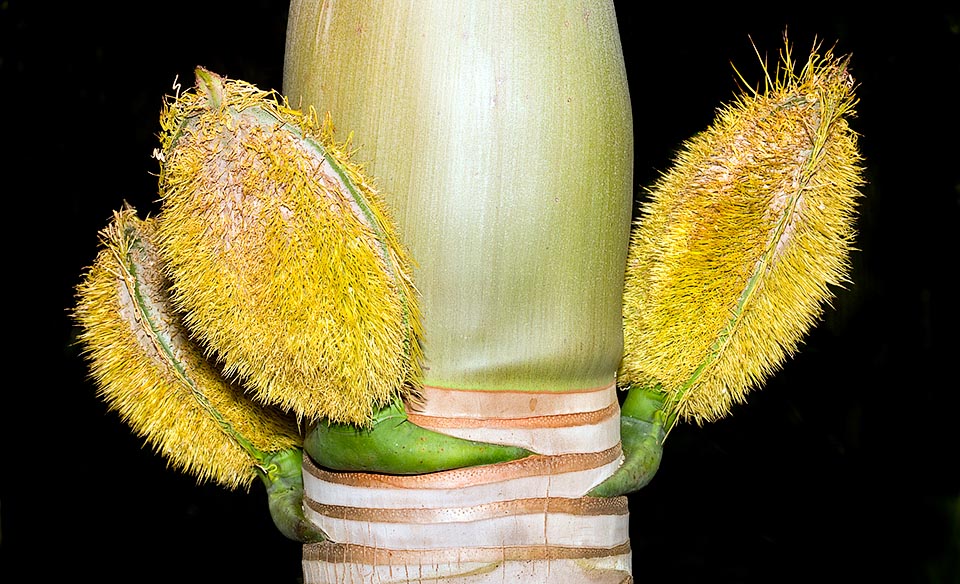Family : Arecaceae

Text © Pietro Puccio

English translation by Mario Beltramini

The Deckenia nobilis is endemic to Seychelles. Solitary and slender stem, which can reach a height of 30 m © Giuseppe Mazza
The Deckenia nobilis H.Wendl. ex Seem. (1870) is endemic palm to the Seychelles Islands, it grows in particular in the islands of Mahé, Praslin, Silhouette, La Digue, Felicité and Curieuse, mostly on the exposed sides of the hills, at medium or low altitudes.
The genus is dedicated to the German explorer Karl Klaus von der Decken (1833-1865); the name of the species comes from the Latin “nobilis” = noble, magnificent.
It is commonly known as “chou palmiste” and “palmiste”, in French, and “cabbage palm”, and “millionaire’s salad”, in English, with reference to the alimentary utilization of the vegetative apexes.
Palms with a solitary and slender stem, which can reach a height of 30 m, and more, with a diameter of about 30 cm, of pale grey colour and on which are visible the rings, traces of the junction of the fallen-off leaves, characterised in the young stage by the presence of thick thorns, long 7-8 cm.
The base of the petiole wraps fully the stem for about one metre, and shows itself too, as thorny when young, whilst in the adult plants it is covered by a white tomentum.
The leaves are pinnate, long about 4,5 m, with intense green leaflets long up to 1 metre and regularly inserted on the rachis.
The inflorescences develop under the leaves inside a short greenish-yellow spathe, covered of golden thorns, which tends to dispose itself almost perpendicularly to the stem, at its opening, the inflorescence, very ramified, stretches downwards.
The flowers are grouped in the classical triad (a female flower between two male ones). The fruits are ovoid, small, about 10 mm of length, of a blackish colour when ripe. It is considered one of the most ornamental palms, in spite of the young “aggressive” stage, but it has revealed as not much suitable for climates different from the strictly humid tropical one.

Thorny spathes protect the inflorescences. It is considered one of the most ornamental palms © Giuseppe Mazza
In the past, its population has risked to considerably reduce due to the alimentary utilization of the vegetative apexes, the “palm hearts”, which collection has, as a consequence, the death of the plant. Now it is considered “vulnerable” and is inserted in the protected plants.
Synonyms: Iriartea nobilis (H.Wendl. ex Seem.) N.E.Br. (1882).
→ For general notions about ARECACEAE please click here.
